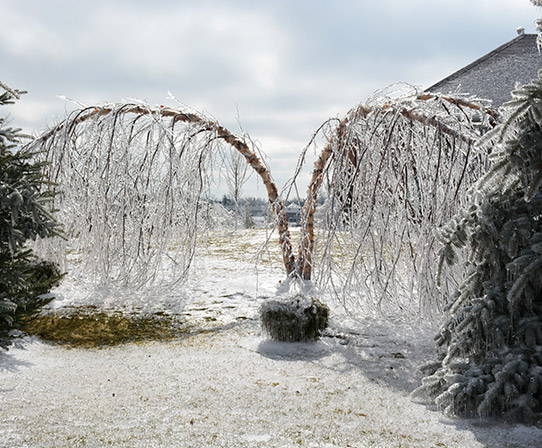3 Common Causes of Winter Damage to Trees [Be Aware of Them]

While Having Fun, Don't Forget About Winter Damage to Trees
/ By: Admin / Tree ServicesWe all enjoy winter. We know how beautiful a garden looks in the whiteness of snow. Also, there are some fun activities for you to do in the snow. For instance, you enjoy building a snowman and making snow angels with your family. But is winter fun for trees? Of course, it’s not. Winter is one of the most challenging seasons for trees.
Winter brings snow, ice, rain, and wind, which places trees under the grasp of harsh weather conditions. Winter damage to trees is something you should be aware. During winter, trees are in its dormant stage, and they are highly vulnerable to weather damage.
Winter Damage to Trees, and How You Can Minimize It
Rapid Temperature Changes
Temperature fluctuations are one of the most common causes of winter damage to trees. Drastic temperature drops can cause frost cracks. Frost cracks are vertical crashes that form in the bark of a tree.
Also, when there are long periods of mild winter weather, this can cause a tree to leave the dormant stage and resume its growth, exposing it to injuries from rapid temperature drops.
Snow or Ice Build-Up
That beautiful white cover comes at a cost. Even though your tree might look great covered in snow, the snow weight can cause damage to it.
Heavy snow and ice can bend and even break the branches of your tree. If a winter storm brings ice to your tree, don’t try to remove the ice from your tree because this can cause more damage to your plant.
To avoid getting winter damage to trees, you should trim them during fall. This for sure will reduce the risk of injury during storms.

If after an ice storm your tree has lost part of the crown, has cracks in the trunk, has broken branches, or is leaning, you should call a tree expert to take care of it.
Root Damage
Root tissues don’t like below freezing soil temperatures. Besides, most roots won’t withstand soil temperatures below 15°F. But, if you mulched your tree during fall, you gave your tree a helping hand.
Mulch insulates the ground enough to prevent soil temperatures from dropping below the natural plant resistance to cold.
How to Minimize Winter Damage to Trees
- Select hardy or native plants
- Water your trees during dry periods
- Mulch your trees to keep moisture and provide insulation to roots
Even though you enjoy winter, your tree is vulnerable to these harsh weather conditions. If you notice any winter damage to trees such as broken branches, lost crown, or cracked trunks, make sure to call us.
Here at Everything Tree Service, we have worked hard every day for the health of your trees, and we´ll continue to do so.


